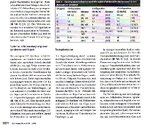Patti Analox
Contributor
- Messages
- 86
- Reaction score
- 57
Hi manus,
Thanks for your questions and Don, as usual, really good answers.
We are lowering the bump gas to 10 ppm. Our Bump-It is a very low pressure, and now low ppm solution which can travel in your checked baggage only. To be fair, you may encounter ill-informed TSA (if you can imagine that) who may decide to seize your Bump Gas. It's doubtful, but stranger things have been removed from checked baggage.
The Bump test is only to make sure the sensor is working. In a pinch, our normal exhalation does include 1 ppm CO, which the EIICO does pick up...you see where I'm going with this.
Pricing in the US is low at the moment because of DEMA purchases being cleared through the marketplace. This is a once a year occurrence. Retail for this unit will be $379.00 USD in North American and comparable in the rest of the world.
Thanks for your questions and Don, as usual, really good answers.
We are lowering the bump gas to 10 ppm. Our Bump-It is a very low pressure, and now low ppm solution which can travel in your checked baggage only. To be fair, you may encounter ill-informed TSA (if you can imagine that) who may decide to seize your Bump Gas. It's doubtful, but stranger things have been removed from checked baggage.
The Bump test is only to make sure the sensor is working. In a pinch, our normal exhalation does include 1 ppm CO, which the EIICO does pick up...you see where I'm going with this.
Pricing in the US is low at the moment because of DEMA purchases being cleared through the marketplace. This is a once a year occurrence. Retail for this unit will be $379.00 USD in North American and comparable in the rest of the world.






